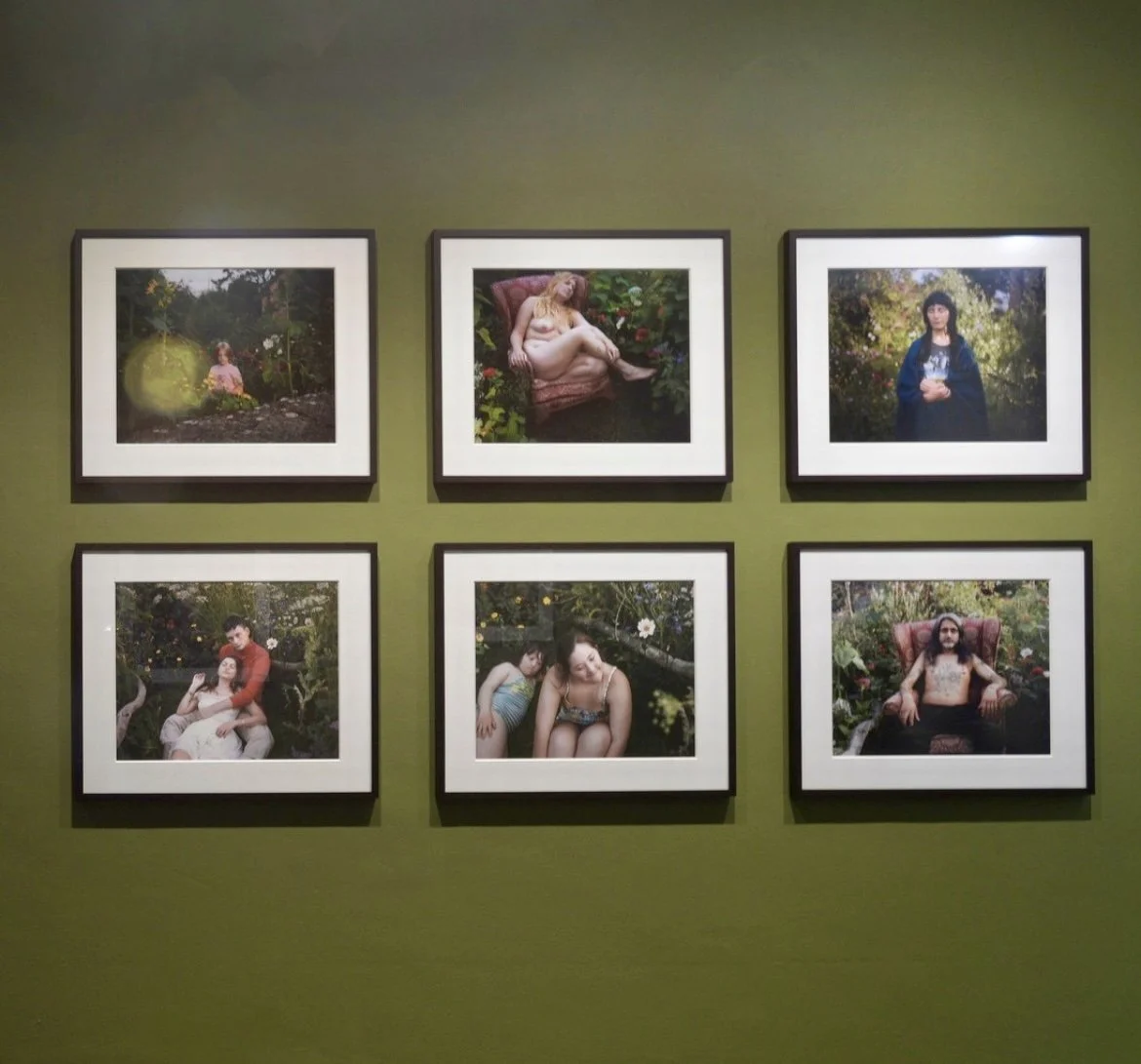The Garden.
Siân Davey.
Image courtesy of Stills gallery Instagram account.
As part of the rafts of exhibitions on during the Edinburgh Art Festival 2025, Stills Gallery on Cockburn Street in the Old Town hosted an exhibition titled The Garden, featuring works by photographer Siân Davey.
I volunteered at Stills as a gallery invigilator for a few months after leaving high school, from December 2015 until around April 2016. I unfortunately had to give it up when I started a full-time job through an apprenticeship programme and was about to begin my undergraduate degree with the Open University, so something had to give, and unfortunately, it was the volunteering. Although my time there was short, I really enjoyed it and found it to be such a welcoming community of people. Ever since, I’ve tried to go back whenever there’s an exhibition or event on, usually a few times a year.
So, when I saw that Stills was hosting an exhibition called The Garden as part of the Edinburgh Art Festival 2025 programme, I was determined to see it before it closed. A friend of mine, who is a photographer, joined me one Saturday afternoon as we braved the Edinburgh Fringe crowds to reach the gallery before the end of August.
Stepping through the doors into the main exhibition space was a welcome relief from the heat and chaos of the festival crowds. We were suddenly surrounded by calm, the walls painted in various shades of green and the photographs punctuating the space at different heights, creating a sense of rhythm and stillness that immediately drew us in.
Alongside her son, Luke, Siân Davey spent three years transforming her garden into a truly immersive wildflower sanctuary. This garden became a backdrop for community and shared stories, where they invited people in to capture moments of connection, love, and reflection. From this, The Garden was born, “a place for heartbreak, joy and everything in between, an expression of sexuality, yearning, joy and interconnectedness. The Garden is a pilgrimage, an intentional act to cultivate a garden that is grounded in love: a reverential offering to humanity.” (Stills, 2025)
Yet, as I moved through the space, I found myself lingering not just on the images themselves but on the gaps between what was shown and what was left unsaid. The photographs carry such an immediate sense of intimacy and care, but there was surprisingly little information about the process behind them: how the garden was planted, how the scenes were constructed, or even who the people in the photographs were. I kept wanting to know whether these moments were staged or whether they had unfolded organically in front of the lens. In a way, I left feeling as though I had more questions than answers, held at a slight distance from the very stories I was trying to step into.
What did stay with me was the strength of the compositions and the colours, soft, warm, saturated tones that stirred a feeling reminiscent of leafing through an old family album. There was a tenderness in that aesthetic that felt rooted in memory, like these could be snapshots from someone’s private archive, carrying traces of nostalgia and familiarity even though the people in them were strangers to me.
The intentional act of creating the garden itself also felt important. Knowing that the space had been cultivated deliberately, over years, as a kind of sanctuary, an offering, added another layer to the photographs. Gardens often look effortless, but underneath that surface is an enormous amount of time, care, and labour. I kept thinking about that quiet devotion, the unseen hours spent tending and nurturing a place so that others could inhabit it, even briefly, in front of a camera. It made me reflect on the gardens and green spaces in my own life, the ones I have helped cultivate, and the ones that have shaped me.
Image courtesy of Stills gallery Instagram account.
I found myself scanning the photographs for familiar plants, almost in the way you search for familiar faces in old pictures. I spotted lupins among the flowers, which immediately pulled me back to the ones I have been growing from seed this past year. Their presence also reminded me of the great drifts of lupins my mum planted in front of our house in Carrbridge, dense, colourful swathes that felt almost wild in their abundance. Each summer I would collect the dead seedheads and scatter them down the embankment at the back of the house, convinced that I could coax a whole sloping meadow into existence. It was probably naïve, but the intention feels connected to this exhibition somehow, a desire to keep something alive, to carry it with me, to let it root itself in new places.
Perhaps that is why the exhibition stirred up so many reflections about belonging. I hope I always have somewhere to grow lupins, a small but steady thread linking each place I have called, and will call, home. In that sense, The Garden felt less like a documentation of a single physical space and more like an invitation to consider the gardens, both real and imagined, that shape our own stories.
References.
Stills (2025) Siân Davey – The Garden [online]. Stills: Centre for Photography. Available at: https://stills.org/exhibitions/sian-davey-the-garden/ [Accessed 26 Oct. 2025].

